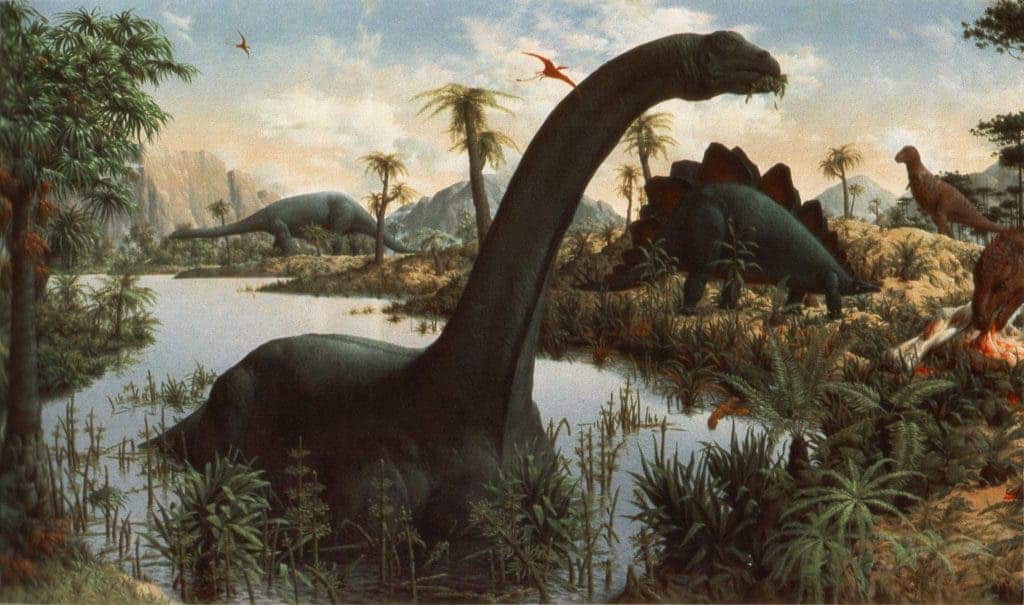Just like Pluto, the iconic dinosaur genus was demoted decades ago and classified under another sauropod genus. But a more sophisticated taxonomy recently published by researchers in the UK and Portugal warrants a revisit of the shelved, but never forgotten Brontosaurus.
A long-necked giant on its own

Brontsaurus or the “thunder lizard” was first unearthed by famed paleontologist Othniel Charles Marsh from the 150-million-year-old rock of Como Bluff, Wyoming. In his 1879 paper, Marsh described the remains as belonging to a “monster” of a dinosaur which he called Brontosaurus. This was a Gold Rush time in paleontology – when science came in second, and everyone just wanted to find things. We have to keep in mind that Darwin had only recently published his seminal Origins of Species which explained evolution and geologists were only beginning to measure the age of the Earth with accuracy. Imagine their surprise when they found the Earth was more than four billion years old… ooops! Back to the Brontosaurus, amid these troubled times, the huge, long-necked dinosaur quickly grew in popular appeal. In 1905 in New York City, it was one of the first dinosaurs to be assembled in a museum. Once people got to visit the museums and saw the huge dino on display, the name Brontosaurus stuck.
Beginning with 1903, however, another paleontologist called Elmer Riggs found that the so-called Brontosaurus was barely distinguishable from another sauropod Marsh had discovered earlier, Apatosaurus ajax. According to measurements made during those times, the only distinguishable hallmark were the number of sacrum bones which connect the tail to the spinal chord. Apatosaurus had three such bones, while Brontosaurus had five. Riggs concluded that the two dinosaurs species were actually two specimens belonging to the same species. The Brontosaurus, Riggs concluded, was in fact a younger version of an adult Apatosaurus and the extra sacrum bones would had fused together as the dinosaur aged. Eventually, Riggs came around and acknowledged that there were some other differences between the two dinosaurs, but not enough to warrant a new genus. So Brontosaurus was turned into Apatosaurus excelsus, and by the 1970s every scholar had forgone the Brontosaurus. Yet, even to this day the public still recognizes the Brontosaurus even though many aren’t aware that, scientifically at least, there’s no such thing anymore.
This taxonomy might not be correct, however, according to a new research which studied the digital libraries containing high-res scans of every diplodocid bone ever dug up. Some 500 anatomical landmarks were identified in 81 species. These include things like neck bone size, shoulder blade shape and so on. Surprisingly, the general shape of the diplodocid tree as described by paleontologist remained virtually unchanged with one notable exception: the fossils first described by Marsh as belong to Brontosaurus differed from the two Apatosaurus species.
“The most obvious and visual feature would be that Apatosaurus has a wider neck than Brontosaurus,” says says study co-author Emmanuel Tschopp of the Universidade Nova de Lisboa. And despite the title of “thunder lizard,” Brontosaurus was not quite as robust as Apatosaurus.
“We were very surprised when we got these results that Brontosaurus was valid again,” the researchers concluded in PeerJ.
To be sure, the team enlisted the help of Roger Benson at the University of Oxford, who is an expert in using statistical analyses to verify speciation. His work found no fault in the model, supporting the claim that Brontosaurus deserves his own genus after all.
“It was a number of small differences that were important, but probably the most obvious features that would help distinguish the two is that the Apatosaurus has an extremely wide neck, where Brontosaurus‘ is more high than wide,” Benson said, echoing Tscopp’s conclusions.
This is far from a settled matter. Some researchers may look at the result and conclude that Brontosaurus should still be an Apatosaurus because of their close relationship, forming what paleontologists call a monophyletic group, others might emphasize the diversity at play and call for a separate genus. But this is a good thing, because the debate might generate a new standard used to better differentiate species, genus, orders or families.






